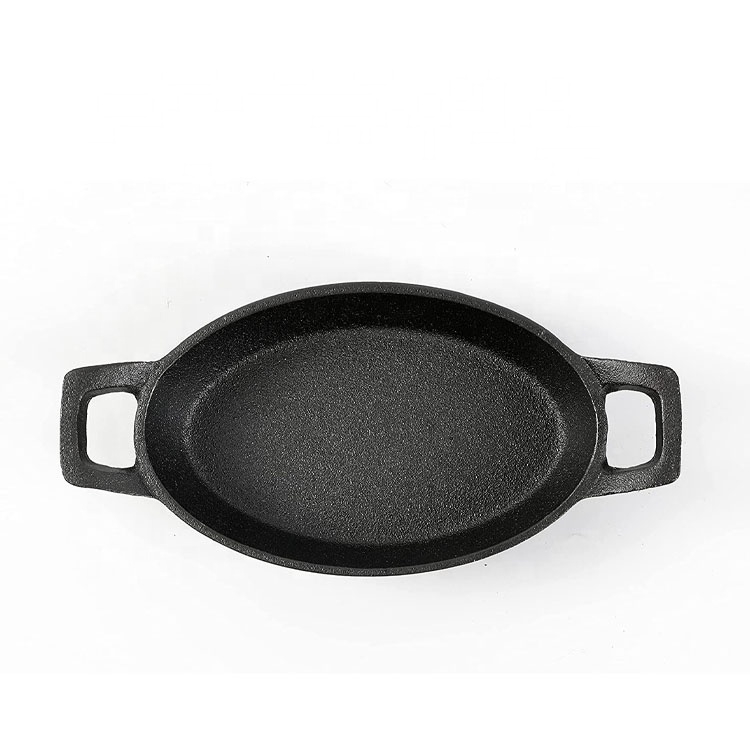
cleaning cast iron skillet with salt
Cleaning a Cast Iron Skillet with Salt The Essential Guide
Cast iron skillets are cherished kitchen tools known for their durability and excellent heat retention. They can last a lifetime with proper care. However, maintaining their non-stick surface and preventing rust requires specific cleaning methods. One effective and natural way to clean a cast iron skillet is by using salt. Here’s a comprehensive guide on how to do it.
Why Clean with Salt?
Salt is a natural abrasive, making it ideal for scrubbing off food residues and stuck-on bits without damaging the seasoning layer of the skillet. Unlike many cleaning agents, salt is safe for use on cast iron, as it won’t create any harmful residues. Moreover, cleaning your skillet with salt helps maintain its non-stick properties and can even enhance the seasoning over time.
Materials Needed
To clean your cast iron skillet with salt, you’ll need
- Coarse salt (kosher salt or sea salt works best) - A paper towel or a clean cloth - A spatula or scraper (optional, for stubborn bits) - Water (optional) - Vegetable oil or flaxseed oil (for re-seasoning)
Step-by-Step Cleaning Process
1. Let the Skillet Cool After cooking, allow your skillet to cool down naturally. Avoid soaking a hot skillet in water, as this can cause it to warp or crack.
cleaning cast iron skillet with salt

2. Use Coarse Salt Once the skillet is cool, sprinkle a generous amount of coarse salt over the surface. The quantity will depend on how dirty the skillet is, but generally, two to three tablespoons should suffice.
3. Scrub the Surface Using a paper towel or a clean cloth, begin scrubbing the skillet with the salt. The friction from the salt will help to lift off any food particles and grease. For areas with stubborn residue, you can use a spatula or scraper to gently dislodge food stuck to the pan.
4. Rinse or Wipe After scrubbing, you may rinse the skillet with warm water to eliminate any remaining salt and food particles. However, many cast iron enthusiasts prefer to wipe it out with a dry cloth to avoid rust. If you do rinse it, make sure to dry it thoroughly.
5. Re-season if Necessary If you notice that the skillet looks dry or has lost some of its shine, it’s time to re-season it. Apply a thin layer of vegetable oil or flaxseed oil to the interior of the skillet. Use a paper towel to spread it evenly and remove any excess. Place the skillet upside-down in the oven while it preheats to 375°F (190°C) for about an hour. This will help to create a well-seasoned surface.
Additional Tips
- Avoid using soap or harsh cleaners, as they can strip the seasoning from the skillet. - If you have stubborn rust or sticky residue, consider using a mixture of salt and a small amount of water to create a paste for deeper cleaning. - Store your cast iron skillet in a dry place and consider placing a paper towel inside it to absorb moisture.
Conclusion
Cleaning your cast iron skillet with salt is a simple and effective method that not only removes food particles but also maintains and improves the skillet's seasoning. Regular care will ensure that your skillet lasts for generations, ready to produce countless delicious meals. The key is to treat your cast iron skillet with respect, using the proper techniques to keep it in top condition. By incorporating salt into your cleaning routine, you can preserve the non-stick surface and enhance the unique charm of your beloved kitchen companion.
-
Authentic Traditional Chinese Wok for High-Performance CookingNewsAug.02,2025
-
Season Cast Iron Perfectly with GPT-4 Turbo TipsNewsAug.01,2025
-
High Quality Cast Iron Cookware - Baixiang County Zhongda MachineryNewsAug.01,2025
-
Premium Cast Iron Pan: Durable & Perfect HeatNewsAug.01,2025
-
High Quality Kitchen Durable Black Round Cast Iron Cookware Pancake Crepe Pan-Baixiang County Zhongda Machinery Manufacturing Co., Ltd.NewsAug.01,2025
-
Cast Iron Cookware - Baixiang County Zhongda Machinery | Nonstick, Heat ResistanceNewsAug.01,2025


